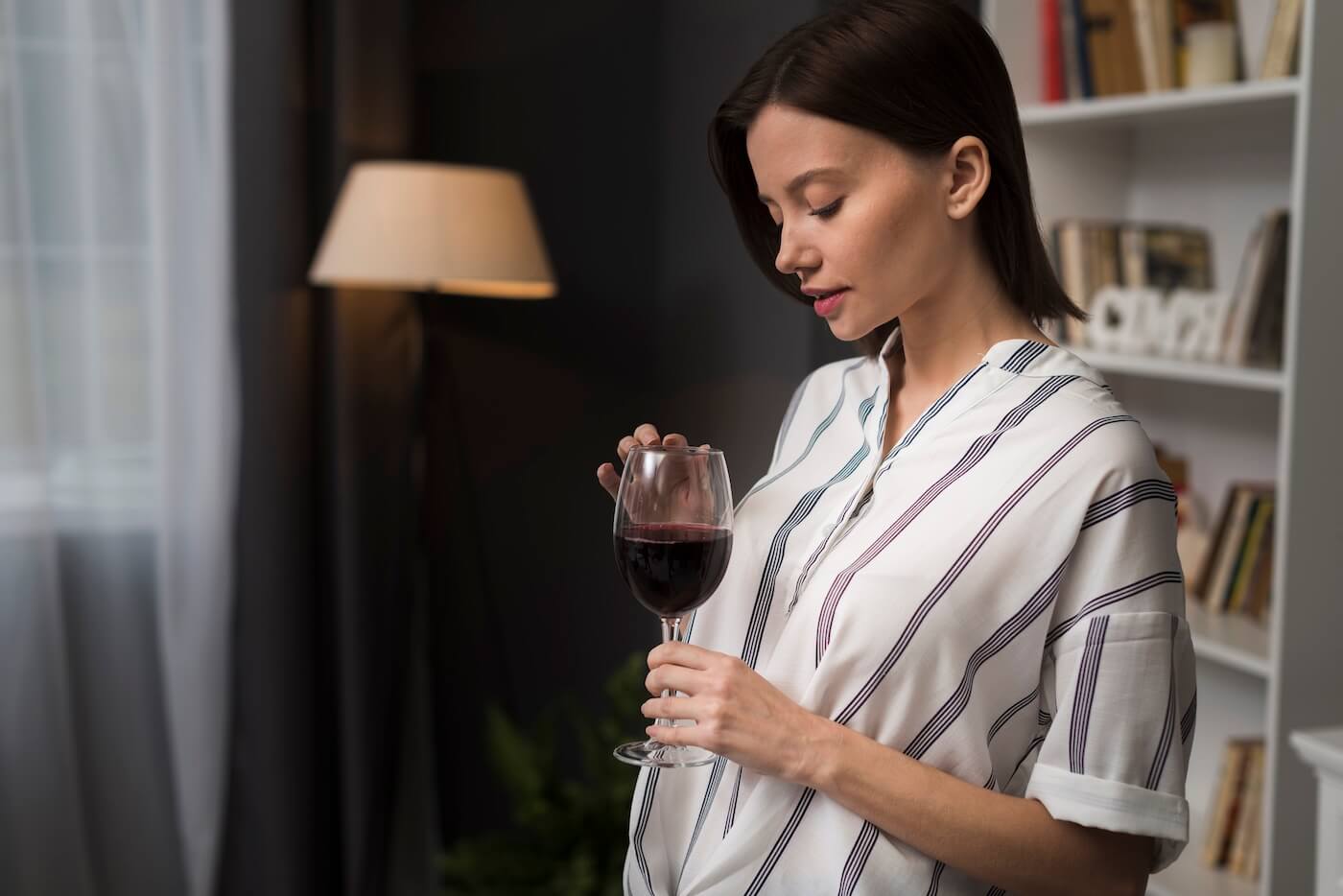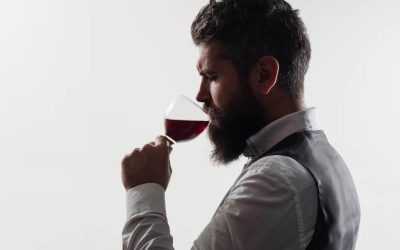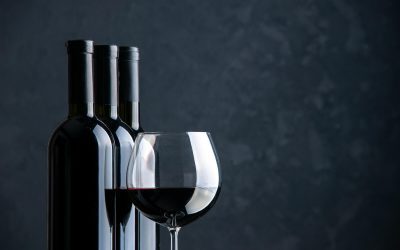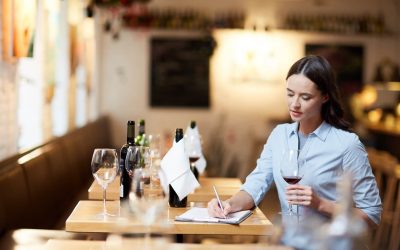Tasting is experiencing a sensory symbiosis between sight, smell, taste, and even touch.
The famous 4S scheme:
- See
- Swirl
- Sniff
- Sip

… reveals the essence of a wine, its complexity, its balance, its finish and mouthfeel. Through this exploration, you activate physical and emotional sensations, and integrate a personal sensory language. Through this exploration, you activate physical and emotional sensations, and integrate a personal sensory language.
Equipment Matters, It’s a Springboard for your Senses
Make no mistake, the use of suitable glasses, as well as the temperature and aeration of your wine, are all factors that influence its qualities, aromas, and your sensations.
Suitable Glasses
A tulip glass allows aromas to concentrate, releasing them during the swirl. Beware of fancy glasses: transparency, stem, and a neutral shape stimulate your senses without biasing them.
Temperature and Aeration
Serving a wine too cold masks its structure; too warm, the alcohol dominates. Practice decanting or controlled aeration to let the wine open up, especially young reds.
The Sensory Journey: See, Smell, Taste, Feel
👁️ See: the First Impression
- Observe the color, clarity, and density.
- Tilt the glass to see the color, and identify any potential flaws. These visual cues immerse your mind in the wine’s story.
👃 Smell: Encouraging Aromas
- First approach: static nose, smell the primary aromas (fruit, flowers).
- After swirl: after agitation, capture the secondary (fermentation) and tertiary (evolution) aromas.
- Use the aroma wheel to enrich your vocabulary.
👄 Taste: Enhancing Complexity
- Slightly aspirate to oxygenate the wine in your mouth: the aromas intensify.
- Explore sweet, salty, acidic, bitter, umami, texture, body, and length.
- Note the trigeminal sensation: alcohol warmth, tannins, freshness.
🧠 Feeling: Emotions and Memories
A wine can stimulate an emotion, a memory. These subjective perceptions enrich your relationship with wine: a personal emotional map emerges.
Wondering how to Improve your Tasting Skills?
1. Comparative Tasting: Sharpening your Eye and Palate
Comparative tasting involves alternating between two similar wines — by grape variety, region, or style — to sharpen your sensory perception. By tasting several wines side-by-side, you train your brain to distinguish aromatic subtleties, ensuring a finer and more confident palate:
- Perform a triangle test: two identical glasses of one wine, a third different. The goal? To identify the distinct glass — an excellent exercise for refining subtle discrimination between two profiles.
- A horizontal flight (same vintage of a grape variety) or regional flight (same grape variety, different regions) reveals the nuances of terroir or winemaking.
- Comparative tastings also allow you to discover your personal preferences by noting differences in body, tannic structure, or length.
2. Impact of Food: Test with and without Food Pairing
Performing the same tasting before and after a dish helps understand how taste components interact:
- A dry wine may seem rounder after a fatty dish, a tannic red can be softened by proteins.
- This contrast reveals the influence of the meal’s sweet, acidic, or salty elements on your perceptions, and refines your ability to pair food and wine more accurately.
3. Active Tasting Notes: Capturing the Moment
Taking immediate notes (without filter) helps structure your sensory memory:
- Record aromas, impressions, tactile sensations, and mouthfeel — the act of writing strengthens cognitive integration.
- Revisiting these notes a day later activates residual memory: you may sometimes discover new nuances that were forgotten at the moment.
- You will thus observe progress in the quality and richness of your observations.
4. Sharing and Exchange: Collective Learning
Drinking alone is good, but tasting with others is better:
- Group tastings encourage exchange, enrich your sensory vocabulary, and are recognized as a key tool for progress.
- Daring to explain why a wine evokes a certain sensation, your emotion, or your memory, develops your analytical skills: sharing your impressions is like coaching your own palate.
5. Rhythm and Breaks: Preserving Sensitivity
During a session, your attention and senses tire:
- Limit yourself to 5–6 wines per session, alternating with water, plain bread, or savory crackers: this cleanses the palate.
- Allow yourself regular breaks: sensory saturation impairs finesse and distorts perceptions.
In summary: you will succeed in refining your tasting experience by combining:
- Targeted comparisons (triangle, horizontal, regional)
- Gustatory pairings / mismatches (with or without food)
- Dynamic notes (immediate then re-evaluated)
- Collective feedback (in groups, with justification)
- Measured pace (limited number of wines, mandatory breaks)
This protocol transforms a simple tasting into a true structured sensory session, where your palate becomes more accurate, more expressive, and your tasting experience, richer.
The tasting experience is the art of traveling inside a wine. With the right equipment, methodical practices, and openness to sharing, you transform every sip into a moment of emotion, discovery, and connection.
Start now: prepare your tasting space, choose two wines, follow the 4S, note everything, exchange with passion. Your palate will thank you!







